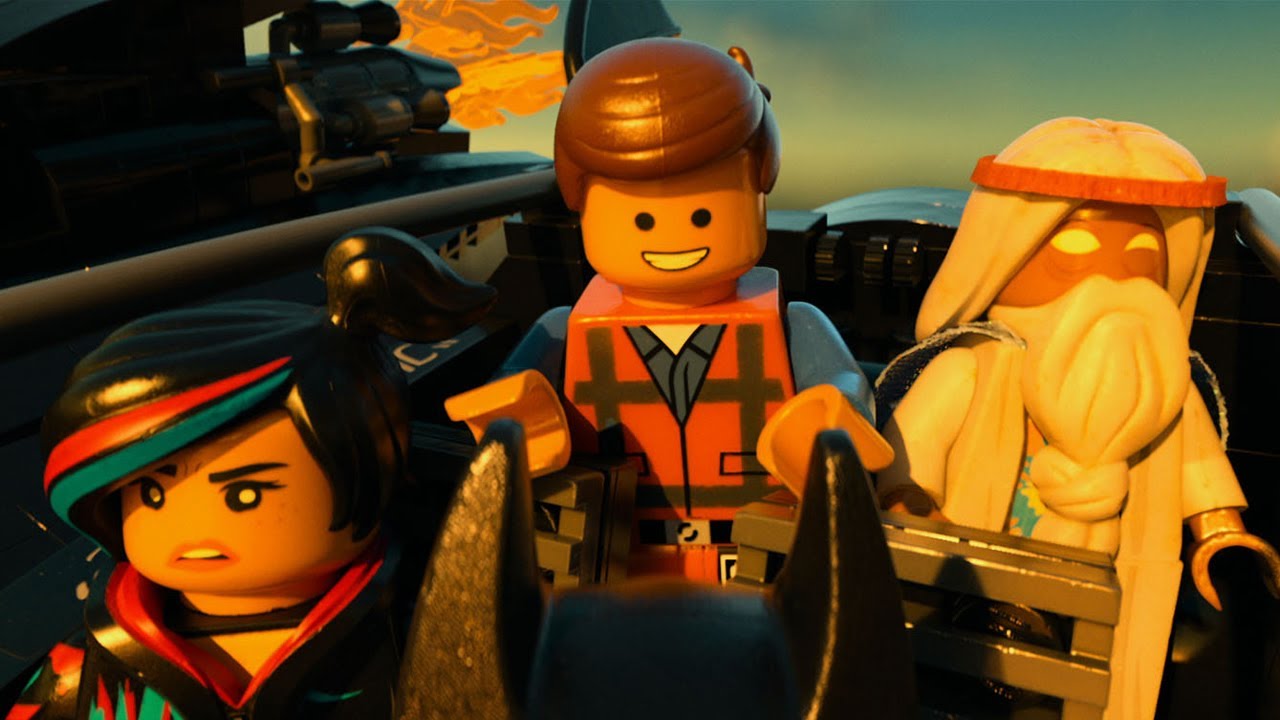Seen as an eye-rolling example of branding-mad Hollywood at its worst when first announced, The Lego Movie edged slightly towards the possibility of not being a brain-dead commercial for itself with the hiring of Chris Miller and Phillip Lord as writers and directors. Miller and Lord have a distinguished record in saving what seemed like bad ideas; they made the slim, silly book Cloudy with a Chance of Meatballs into a big-but-coherent epic; they turned what could have been a rehash-reboot of 21 Jump Street and made it work as meta-commentary and, yes, as a film in and unto itself. But the question remained: How do you turn Danish plastic toys from 1934 — made in the absolute absence of story, to be crafted however one wanted and placed in whatever story a child might want to tell with them — into a Hollywood movie?
And sure, many people will tell you that Lord and Miller have pulled it off here (indeed, Warner Brothers announced a sequel before the formal opening date, so those many people are not alone) it has to be noted that suggesting Lord and Miller have ‘pulled it off’ is a titanic understatement. I thought from Lord and Miller’s prior work (including the dizzy, silly and razor-sharp Clone High) that they might be able to make The Lego Movie into something good-ish. And yet, what left me not merely amused but amazed, not merely diverted but instead delighted, was the level of real heart and soul Lord and Miller put into their plastic-and-pop-culture universe. Without giving away anything, let’s just say that The Lego Movie doesn’t just, as so many other kid’s entertainments do, paint its good and bad guys and their principles and their motives with a broad brush, but instead looks at their principles and motives and looks at how they might be brought together for a better world in a sequence as quietly amazing as the emotional power The Princess Bride packs into similar, equally playful but equally profound meta-storytelling.
The plot sees everyfig Emmet (Chris Pratt, the epitome of enthusiasm), while working in the too-coordinated Brickopolis, literally stumble across the Piece de Resistance, an artifact that might be able to stop Lord Business (Will Ferrell) from turning Emmet’s corner of the Lego multiverse and then all the others into a static silent scream of petrified, lifeless perfection. Emmet’s unlikely status as the clumsy-handed chosen one means he’s found by Wyldstyle (Elizabeth Banks) — an anti-Lord Business rebel whose first words are “Come with me if you want to not die” — and Vitruvius (Morgan Freeman), a wise sage who intones a lot of the exposition. They’re Master Builders, and they find Emmet’s need for instructions insane and inane. But when they team up with other Master Builders like Metalbeard the Pirate (Nick Offerman) and Princess Unikitty (Alison Brie) and Benny (Charlie Day) (an astronaut from the ’80s space Lego sets), to build a craft and escape Lord Business, Emmet can’t help but notice that their one ship looks like the separate plans of five people …
And this is the contradiction, explored and appreciated in the film, that makes Lego — and The Lego Movie, and life for that matter — great: Possibility needs to be guided by planning; structure and order can be enhanced by creativity. In his 1998 profile of Lego in The New Yorker, “The Joy of Bricks,” Anthony Lane noted how real would-be Lego Master Builders are asked, as part of their audition, to make a perfect sphere … with square blocks. And occasionally, they somehow do, in an act of math-magic that this film resembles. There’s big jokes here – the magical Lego Kingdom is called ‘Middle Zealand’ – and also tiny ones, like the fact that Benny’s spaceman helmet is broken precisely where the real Lego spacepeople always had their helmets break. Cinematographers Barry Peterson and Pablo Plaisted, much like the great Dick Pope did with Team America: World Police, build a world both beautiful and mad, utterly real while being completely invented. Like the South Park “Imaginationland” arc – including the presence of luminaries like Gandalf, Wonder Woman, Abraham Lincoln, Shaquille O’Neal and Batman among the Master Builders – The Lego Movie is a story about our shared stories, and not only plays with that idea but also pays it off in a way where the intimacy proves its universality.
Wisely — and firmly — poking holes in the tired ‘Chosen one’ narratives that infect and inflect too many modern blockbusters, The Lego Movie is also a technical tour-de-force that’s so impressive it becomes immersive. The animation is a mix of CG, stop-motion and a few other techniques, creating a world as gloriously real and yet wonderfully silly as it can be, like a child’s dreams (and other unconscious thoughts) given bustling, goofy, sincere life. (I know some animation purists who consider mixing stop-motion and CGI heretical, but as for me, I like peanut butter and chocolate in the hands of people who know what they’re doing.) The 3D is smart and sublime and more natural than it is showy; the vocal performances are perfect, and the film’s jump to a whole other plane of existence isn’t just perfect and delightful but ultimately more smart, engaging and honestly inspiring than the shouted, over-emoted cliché through-lines of three quarters of this year’s Oscar Best Picture Nominees. Subversive and thrilling, winking occasionally from a clear-eyed and emotionally intelligent point-of-view, The Lego Movie turns what could have been an effort in bland branding and regurgitated reinvention into a film as classic and complex as the enduring, simple plastic blocks that inspired it.

